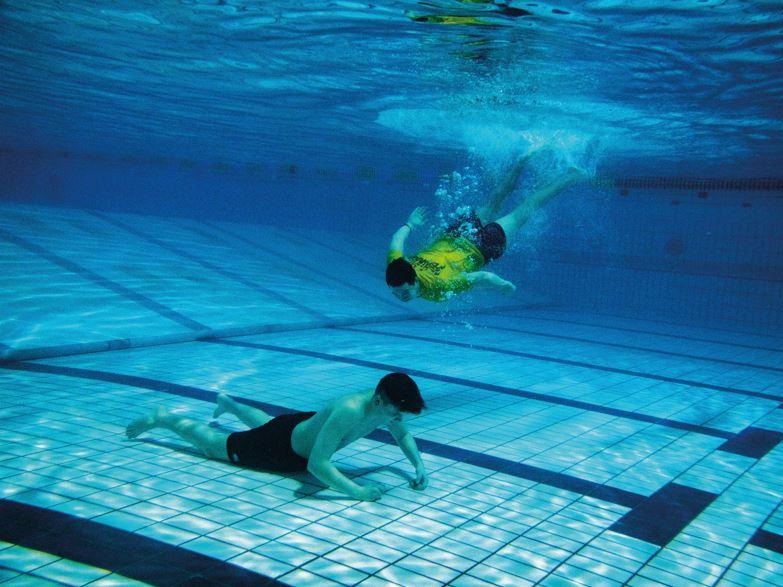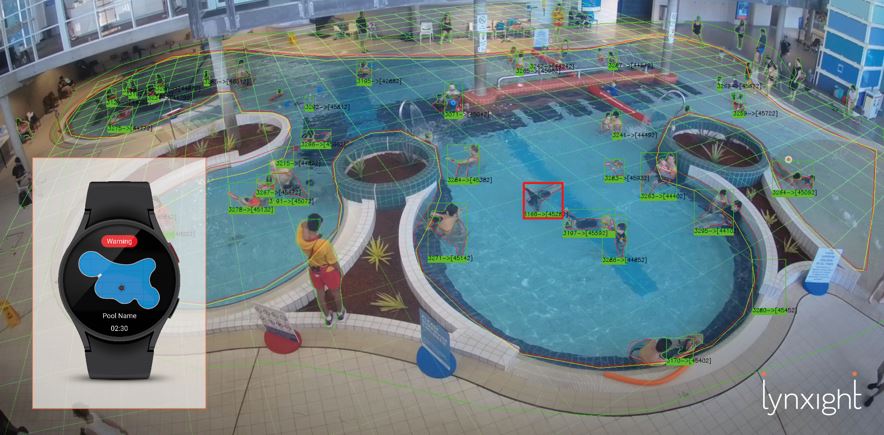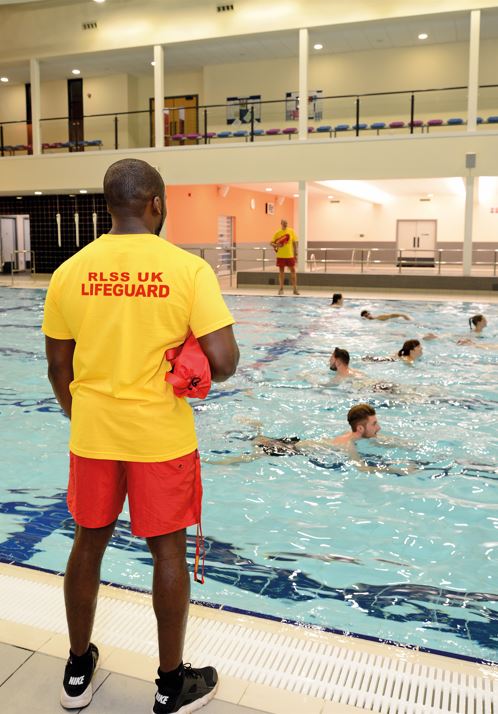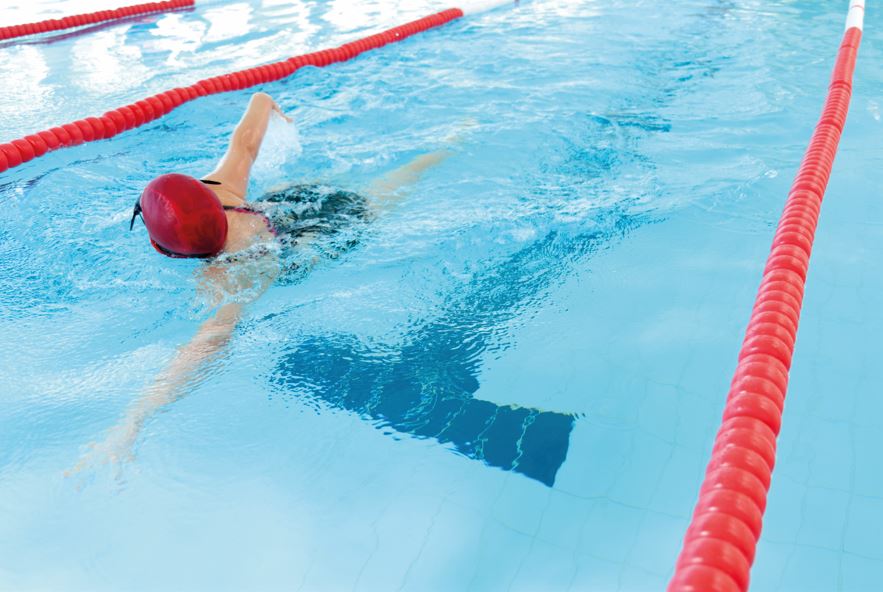
Introducing new, assisted lifeguard technology promises to take safety in public swimming pools to unprecedented heights. Jo Talbot, RLSS UK’s commercial director, explains how.
Technology is integrated seamlessly into our daily lives, from self-service checkouts to facial recognition. The tech revolution has also extended into swimming pools, where innovative systems enhance lifeguarding, improving safety and helping identify potential water-related emergencies.
The Health and Safety Executive’s ‘Health and Safety in Swimming Pools’ publication provides guidance for using technology to aid observation in swimming pools. The guidance emphasises the significance of using technology as a supplementary tool for lifeguards rather than a replacement unless a rigorous risk assessment demonstrates equivalent risk control.
A new collaboration is using technological advances to transform pool safety and management. The Royal Life Saving Society UK (RLSS UK), the UK’s foremost aquatic water safety organisation, and GLL, the UK’s largest public swimming pool operator, have joined forces with Lynxight, a pioneer in assisted lifeguard technology, to introduce an innovative and cost-effective solution for pool risk management across the UK and Ireland.
The technology combines specialist Artificial Intelligence (AI) software and swimmer behaviour analysis with standard security cameras to give lifeguards real-time insights above and below the water, delivered directly to standard smartwatches. The solution complements the work of lifeguards, as recommended in the new National Pool Lifeguard Qualification (NPLQ) Gen 10.
It continuously monitors pool users and promptly alerts lifeguards via smartwatches about anyone requiring assistance, enhancing overall pool safety. The cost-effective and simple-to-install-and-use solution utilises an overhead security camera system to offer easy maintenance, minimal impact on pool buildings, and low visibility to pool visitors. It can operate in various pool types, including indoor standard tank swimming pools, freeform pools with irregular shapes and outdoor swimming pools.
Adapting to UK pool needs
For over 30 years, RLSS UK has supported pool operators with qualifications, guidance, consultancy and training to meet evolving water safety challenges. The charity supports using technology within swimming pools to assist lifeguards in monitoring and supervising swimming pool users, providing early detection and intercepting incidents of swimmers in ill health, and ultimately preventing drownings. RLSS UK worked with Lynxight to adapt the system to meet the stringent needs of UK pool operators, providing them with invaluable metrics to optimise swimming pool operations efficiently. During a successful six-month trial by GLL, Lynxight were able to test and refine the system, providing GLL with invaluable metrics to optimise swimming pool operations, including real-time insights into pool usage, swimmer numbers and detailed data for each lane or pool area.

Technology to support lifeguards
Many devices and systems are available to help lifeguards observe a pool. They can be categorised as follows:
• Swimmer behaviour analysis and casualty recognition systems: These systems utilise AI to monitor swimmers’ behaviour using overhead, underwater or combined cameras. AI algorithms analyse swimmer patterns and continuously assess the risk for swimmers. If someone is in distress, the system alerts lifeguards through monitor screens, tablets or smartwatches, pinpointing the swimmer’s location.
• Submersion detection systems (Drowning Detection Systems): Cameras installed in the pool or overhead, and computer software track swimmers’ activity. These systems recognise when a swimmer has been submerged for an extended period and trigger an alarm to notify lifeguards of an emergency. Some systems can even identify swimmers in distress or motionless under water.
• Personal, wearable drowning detection systems: Swimmers wear wristbands or other devices equipped with sensors to monitor their movements in the pool. These devices can detect prolonged static movement under water and raise alarms for lifeguards. Some systems also trigger alarms when the device passes below a specific water depth and does not resurface within a specified time.
• Underwater and overhead cameras: These camera systems provide lifeguards with a comprehensive view of their assigned zones, including blind spots or areas not visible to them due to water features or glare. These cameras are usually linked to a monitor screen that lifeguards can use for surveillance but do not automatically raise alarms.
Making the most of tech
When choosing to use technology, RLSS UK advises higher education pool operators to:
• Carefully consider systems to ensure they are fit for purpose and suitable for the swimming pool facilities and the environment.
• Review and update risk assessments regarding swimming pool supervision.
• Complete Lifeguard Zone Visibility Tests to ensure all swimming pool areas can be observed and supervised.
• Review and update Pool Safety Operating Procedures regarding swimming pool supervision and dealing with swimming pool emergencies.
• Ensure procedures and systems are in place for times when technology fails and cannot be used.
• Provide training in line with the manufacturer's guidance for all employees using the system, checking competency before use, and ensuring employees use the technology system correctly in the future.
Technology can play a significant role in enhancing swimming pool safety. Today’s systems complement the work of lifeguards, ensuring early detection, rapid response to emergencies and reducing the risk of drownings to make swimming pools even safer for everyone.


